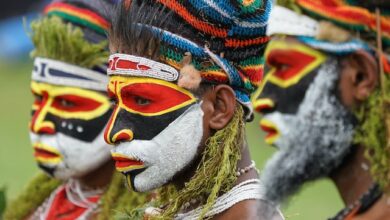Twa people/ Batwa or Pygmies, : Culture, Religion & Genocide

Twa people or Batwa, one of the most incredible known Pygmy groups bunches dispersed across central Africa. Like any remaining African Pygmies, the Twa, averaging around 1.5 m (4 ft 11 in) in level, are a group of mixed heritage, presumably relatives of the first occupants of the central rainforest.
They live in the high mountains and fields around Lake Kivu, in Congo (Kinshasa), Rwanda, and Burundi, and function in financially beneficial interaction with the peaceful Tutsi, the rural Hutu, and different people groups. Many have practical experience in stoneware, which they market; others hunt. It is many times argued that the Pygmies were the native occupants of the forest before the coming of farming.
Connection to the Bantu populaces
All Pygmy and Twa people live close to or in farming towns. Farming Bantu people groups have settled various ecotones close to an area that has game however won’t uphold agribusiness, like the edges of the rainforest, open bog, and desert. The Twa people spend part of the year in the generally uninhabited locale hunting match-up, exchanging for agricultural products with the farmers.
Also Read: A Tale of The Bantu People of Africa (Shona, Zulu, Luba, Sukuma, Kikuyu)
Twa People of Democratic Republic of Congo/Great Lakes Twa and Mongo Twa

Twa people live scattered all through the Democratic Republic of Congo. Notwithstanding, there are outstanding populaces in the swamp forest around Lake Tumba in the west (around 14,000 Twa live there)
The island of Idwji has a local populace of approx 7000 BaTwa. Also, as per UNHRW in excess of 10000 BaTwa are dislodged from Virunga Park in the Northern Kivu territory’s refugee camps, such as Mugunga and Mubambiro as a result of many years of war.
The term Batwa is utilized to cover various different social gatherings, while numerous Batwa in different places of the DRC call themselves Bambuti.
Bedouin and frontier accounts discuss Twa on one or the other side of the Lomami River southwest of Kisangani, and on the Tshuapa River and its tributary the “Bussera”.
Twa people of Uganda known as Echuya Batwa
The Batwa of Uganda were forest occupants who lived by social affair and hunting as the principal wellspring of food. They are accepted to have lived in the Bwindi Impenetrable and Mgahinga National parks that line the Democratic Republic of Congo (DRC) and Rwanda living principally in regions lining other Bantu Tribes.
In 1992, the existence of the Batwa dwarfs changed for eternity. The Bwindi Impenetrable Forest turned into a public park and World Heritage Site to safeguard the 350 imperiled mountain gorillas inside its limits. The Batwa were removed from the recreation area. Since they had no title to land, they were given no compensation. The Batwa became preservation refugees in a new, unforested world. Poverty, medication and liquor misuse, absence of modern education, HIV as well as gender-based violence and separation are higher among Batwa people group than among the adjoining Bantu people group.
Twa people of Zambia and Botswana/Kafwe Twa and Lukanga Twa

The Twa people of these nations live in swampy regions, for example, the Twa anglers of the Bangweulu Swamps, Lukanga Swamp, and Kafue Flats of Zambia; just the Twa fish in Southern Province, where the swampy landscape implies that enormous scope crops can’t be established close to the best fishing grounds.
Cavalli-Sforza additionally shows Twa close to Lake Mweru on the Zambia-Congo line. There are two clear prospects: the Luapula Swamps, and the swamps of Lake Mweru Wantipa. The last option is the Taabwa domain, and the Twa are accounted for to live among the Taabwa. The previous is accounted for to be the region of Bemba-speaking Twa people.





